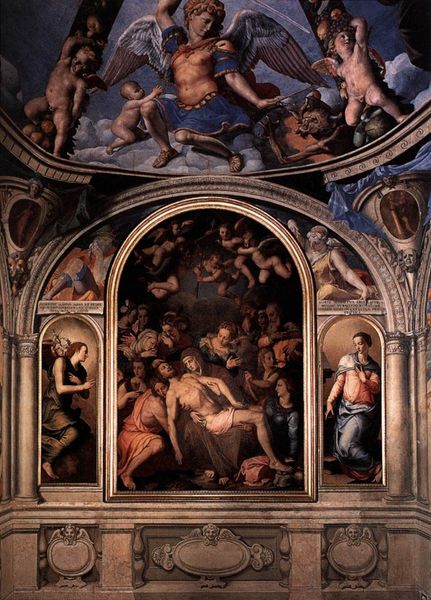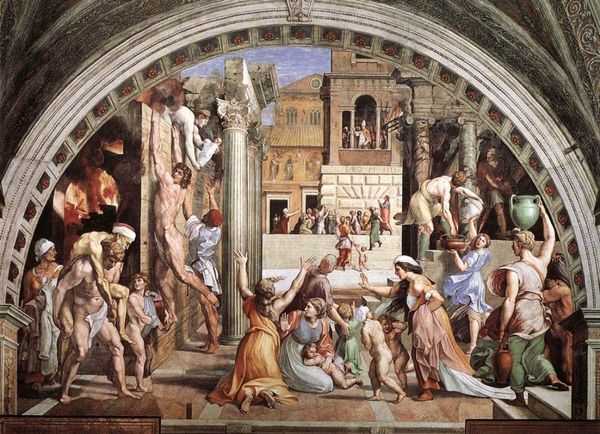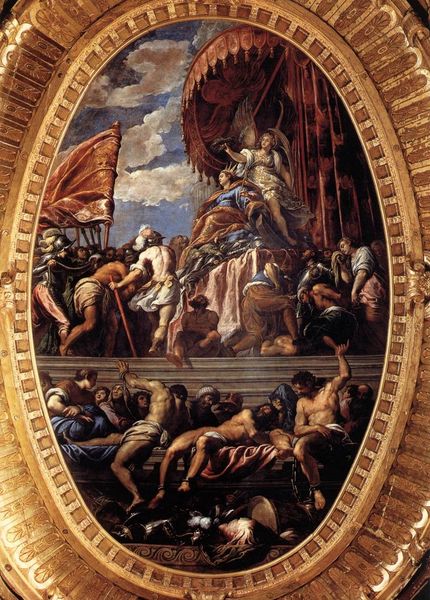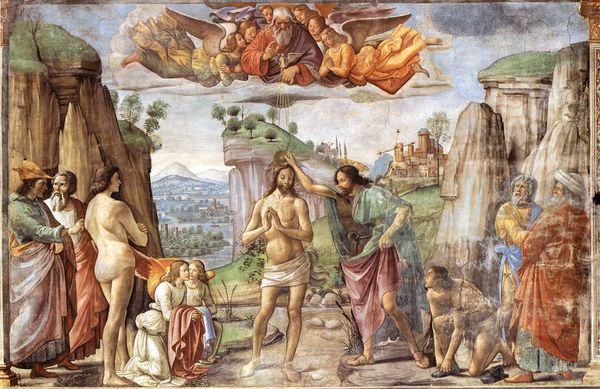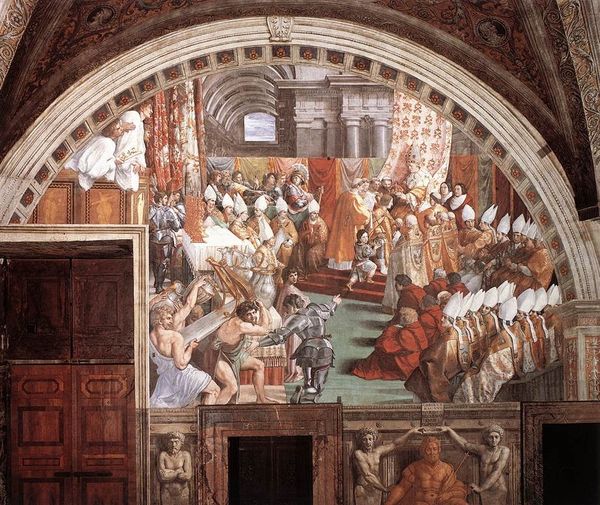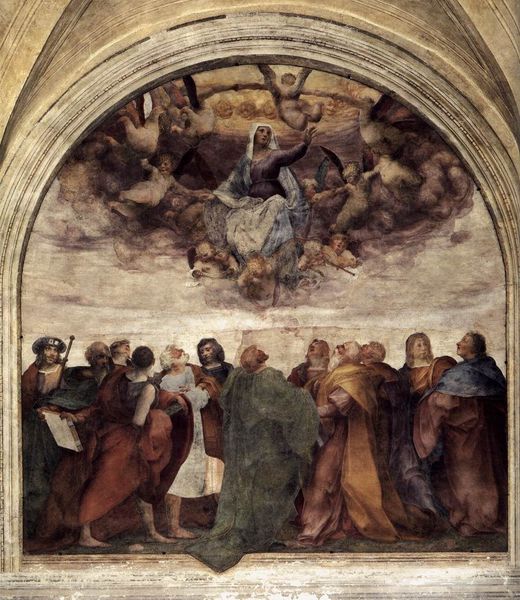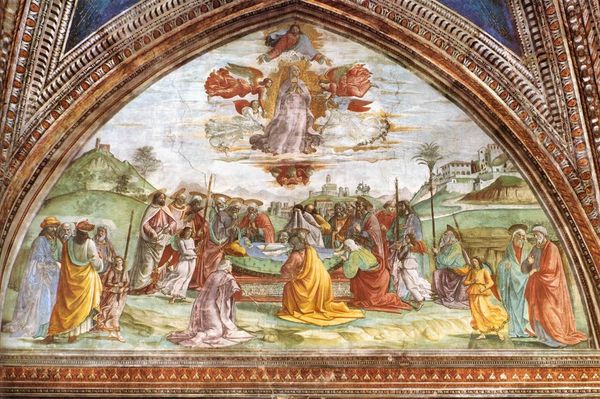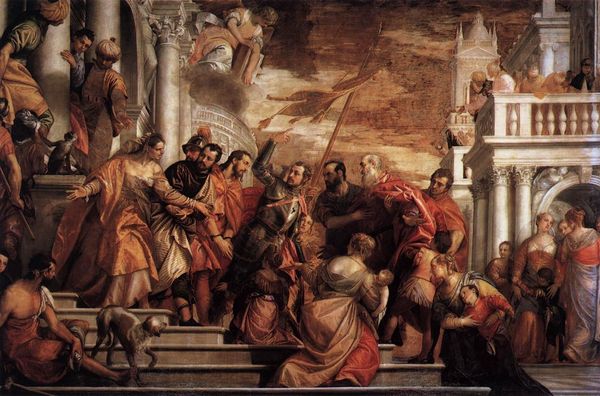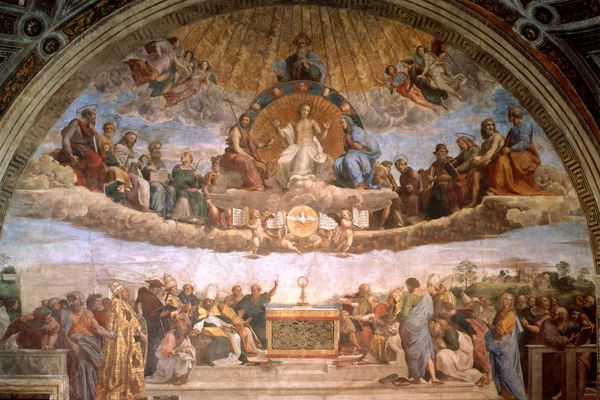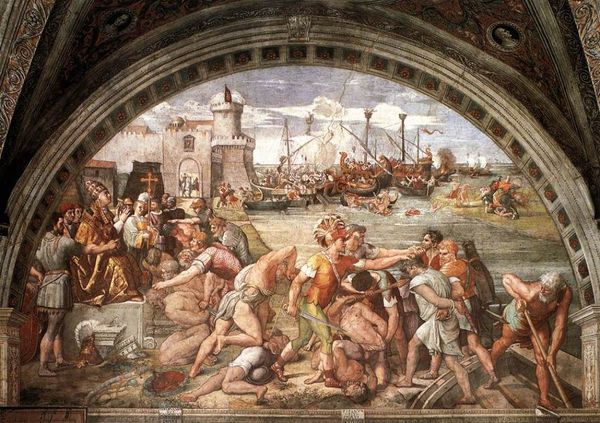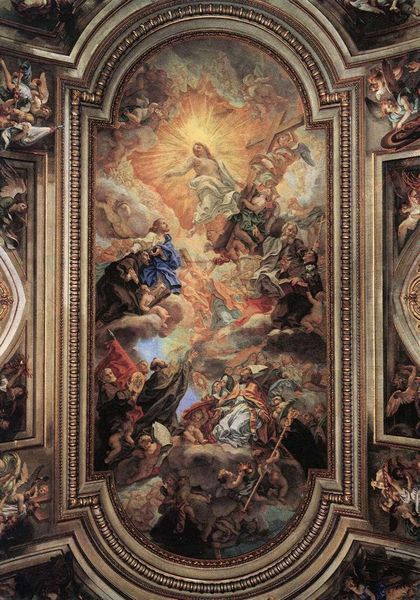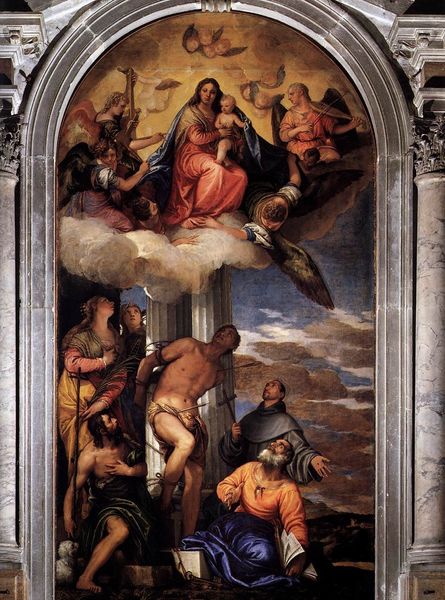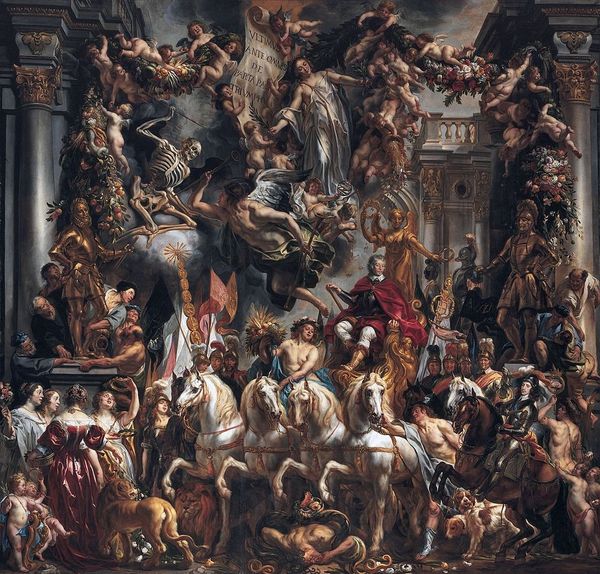
painting, fresco, mural
#
high-renaissance
#
narrative-art
#
painting
#
sculpture
#
figuration
#
historic architecture
#
fresco
#
history-painting
#
academic-art
#
italian-renaissance
#
mural
#
historical building
Copyright: Public domain
Il Sodoma painted this fresco of ‘The Beheading of Niccolò di Tuldo’ sometime in the early 16th century. Fresco is a demanding process. The artist applies pigment to wet plaster, so the image becomes part of the wall itself. Look at the detail here. Note the artist's mastery in capturing the drama of the execution, but also the cost. Fresco work requires advance planning, an investment in materials, and skilled labor for preparation. The context here is all-important: the painting’s inherent value, and the fact that it memorializes a specific execution, would have impressed the value of earthly justice onto viewers. The artist's labor, combined with the setting, lends the work a significance that transcends the image itself. By considering materiality and the context of its making, we appreciate how the artist used not only skill but the labor of others and indeed the very walls around us to create a lasting statement about power, justice, and faith.
Comments
No comments
Be the first to comment and join the conversation on the ultimate creative platform.
